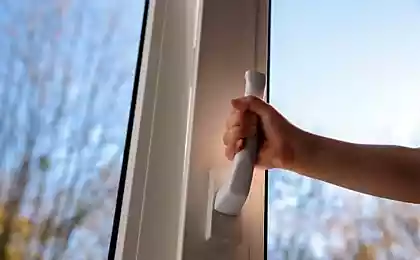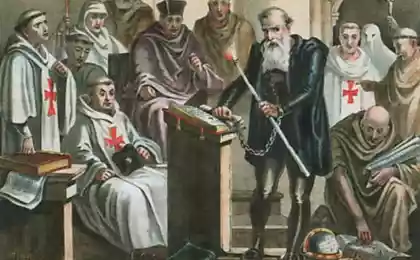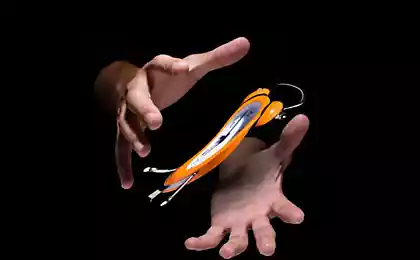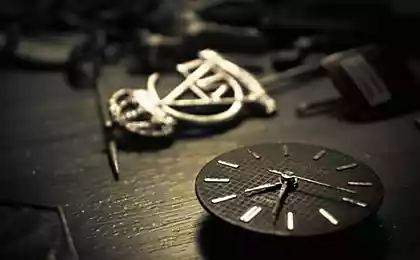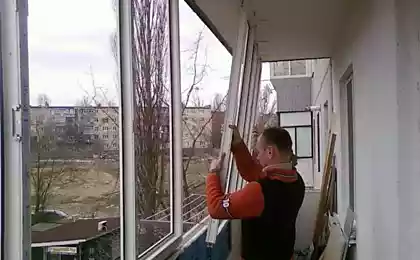692
Broken windows theory
In the 1980s, New York was a hellish inferno. They make more than 1500 serious crimes EVERY DAY. 6-7 murders a day. At night the streets was dangerous to walk and subway ride risky even in daylight. The robbers and beggars in the subway were commonplace. Dirty and wet platform barely covered. The car was cold underfoot was garbage, walls and ceiling completely covered with graffiti.
Here is what a New York subway:
"Having stood an endless queue of token, I tried to put it in the turnstile, but found that the coin is spoiled. Nearby stood a tramp: broken turnstile, he now demanded that the passengers gave tokens to him personally. One of his friends leaned toward the changer and pulled teeth stuck chips, covering all the saliva. Passengers were too scared to argue with these guys, "Here, take this fucking badge, what do I care!" Most people passed through the turnstiles for free. It was the transport version of Dante's Inferno ».
The city was in the grip of the most ferocious epidemic of crime in its history.
But then the inexplicable happened. After reaching a peak in 1990, the, crime has declined sharply. Over the coming years, the number of murders decreased by 2/3, while the number of serious crimes - half. By the end of the decade it was done already in the subway 75% less crime than in the beginning. For some reason, tens of thousands of psychos and Gopnik ceased to violate the law.
What happened? Who pulled the magic of stop valve and what kind of faucet?
Its name - "broken windows theory».
via gugik
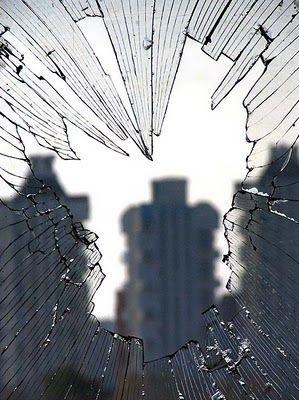
Canadian sociologist Malcolm Gladwell in his book "The Tipping Point" tells:
"Broken windows" - is the brainchild of criminologists Wilson and Kelling. They argued that the crime - the inevitable result of the lack of order. If a window is broken and not glazed, then passing by deciding that nobody cares and nobody is responsible for anything. Soon will be broken and the other windows, and the sense of impunity will spread to the whole street, sending a signal to the whole district. The signal calling for more serious crimes ».
Gladwell deals with social epidemics. He believes that a person breaks the law, not only (or even mainly) because of bad heredity or improper upbringing. Of great importance to him is the fact that he sees around him. Context.
Netherlands sociologists confirm this idea. They conducted a series of interesting experiments. For example, a. With bicycle parking near the store and removed the boxes on the handlebars of bicycles hung flyers. Steel watch - how many people give up fliers on the pavement, and many hesitate. Wall shop near where parked bicycles, was perfectly clean.
Flyers thrown to the ground 33% of cyclists.
The experiment was then repeated, pre-daubed wall meaningless figures.
Namusorili already 69% of cyclists.
But back in New York in the era of wildlife crime. In the mid-1980s in the New York subway has changed leadership. New director David Gunn started with ... the fight against graffiti. It is not that the whole idea of urban public happy. "Boy, Have serious issues - technical issues, fire safety, crime ... Do not waste our money on nonsense!" But Gunn was insistent:
"Graffiti - a symbol of a system crash. If you start the process of restructuring the organization, the first should be a victory over graffiti. Do not winning this battle, no reforms will not take place. We are ready to introduce new trains valued at 10 million. Dollars each, but if we do not protect them from vandalism - we know what happens. They hold on one day, and then they disfigure ».
And Gunn commanded oschischat cars. The route for the route. The composition of the composition. Every feature of the car, every single day. "For us it was a religious act" - he told me later.
At the end of the routes installed washing points. When the car came with graffiti on the walls, drawings washed off during the turn, otherwise the car in general decommissioning. Dirty cars, from which has not yet been washed away graffiti, under no circumstances do not mix with the clean. Gunn conveys to vandals clear message.
"We had a depot in Harlem, where the carriages stood at night, - he told. - The first night were teenagers and spattered with white paint the walls of wagons. The next night, when the paint has dried, they came and surveyed the contours, and the next day everything is painted. That is, they have worked 3 nights. We were waiting when they finish their "work". Then we took the rolls and all painted over. The boys were upset to tears, but it was drawn in from the bottom up. This was our messidzh to them: "Do you want to spend 3 nights on then to deface a train? Let. But no one sees »...
In 1990, as chief of traffic police, William Bratton was hired. Rather than engage in serious business - serious crimes, he took up close ... stowaways. Why is that?
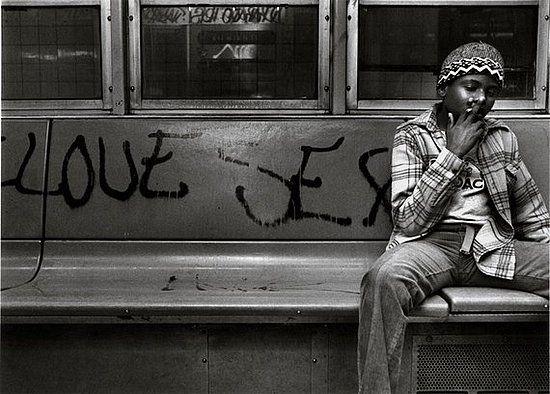
The new chief of police believed - like the problem of graffiti, a huge number of "rabbits" could be a signal indication of a lack of order. And it encouraged the commission of more serious crimes. While 170 thousand passengers made their way to the subway for free. Teens just jumped over the turnstiles, or break through by force. And if 2 or 3 people to game the system, the surrounding (which in other circumstances would not violate the law) joined them. They decided that if someone does not pay, they too will not be. The problem is growing like a snowball.
What did Bratton? He held near the turnstiles 10 plainclothes policemen. They snatched "hares" one by one, put handcuffs on them and lined up in a chain on the platform. There were stowaways, has not yet completed the "big catch". Then they escorted to a police bus, which was searched, fingerprinted and punched database. Many proved to himself weapons. Others have found problems with the law.
"For the cops it was a real El Dorado, - said Bratton. - Every arrest was like a bag of popcorn, which is a surprise. What kind of toy will fall to me now? Pistol? Knife? Any solution? Wow, after you murder! .. Pretty soon the bad guys are smarter, they began to leave the weapon at home and pay for travel ».
In 1994, New York Mayor Rudolph Giuliani was elected. He took Bratton of transport management and appointed chief of police of the city. By the way, Wikipedia says that it has applied for the first time Giuliani broken windows theory. Now we know that's not true. However, the mayor is undeniable merit - he gave the order to develop a strategy throughout New York City.
The police took a fundamentally tough stance toward small offenders. To arrest anyone who drank and brawled in public places. Who threw the empty bottles. Painted wall. I jump through the turnstiles, begging money from drivers for wiping glasses. If someone urinating in the street, he would go straight to jail.
The level of urban crime began to fall sharply - as fast as the subway. Police Chief Bratton and Mayor Giuliani explained: "Small and insignificant at first glance, is a signal for the misdeeds of the serious crimes».
The chain reaction has been stopped. Thoroughly criminal New York by the end of the 1990s was the safest metropolis in America.
Magic emergency brake load.
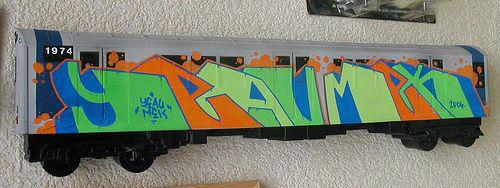
Source:
Here is what a New York subway:
"Having stood an endless queue of token, I tried to put it in the turnstile, but found that the coin is spoiled. Nearby stood a tramp: broken turnstile, he now demanded that the passengers gave tokens to him personally. One of his friends leaned toward the changer and pulled teeth stuck chips, covering all the saliva. Passengers were too scared to argue with these guys, "Here, take this fucking badge, what do I care!" Most people passed through the turnstiles for free. It was the transport version of Dante's Inferno ».
The city was in the grip of the most ferocious epidemic of crime in its history.
But then the inexplicable happened. After reaching a peak in 1990, the, crime has declined sharply. Over the coming years, the number of murders decreased by 2/3, while the number of serious crimes - half. By the end of the decade it was done already in the subway 75% less crime than in the beginning. For some reason, tens of thousands of psychos and Gopnik ceased to violate the law.
What happened? Who pulled the magic of stop valve and what kind of faucet?
Its name - "broken windows theory».
via gugik

Canadian sociologist Malcolm Gladwell in his book "The Tipping Point" tells:
"Broken windows" - is the brainchild of criminologists Wilson and Kelling. They argued that the crime - the inevitable result of the lack of order. If a window is broken and not glazed, then passing by deciding that nobody cares and nobody is responsible for anything. Soon will be broken and the other windows, and the sense of impunity will spread to the whole street, sending a signal to the whole district. The signal calling for more serious crimes ».
Gladwell deals with social epidemics. He believes that a person breaks the law, not only (or even mainly) because of bad heredity or improper upbringing. Of great importance to him is the fact that he sees around him. Context.
Netherlands sociologists confirm this idea. They conducted a series of interesting experiments. For example, a. With bicycle parking near the store and removed the boxes on the handlebars of bicycles hung flyers. Steel watch - how many people give up fliers on the pavement, and many hesitate. Wall shop near where parked bicycles, was perfectly clean.
Flyers thrown to the ground 33% of cyclists.
The experiment was then repeated, pre-daubed wall meaningless figures.
Namusorili already 69% of cyclists.
But back in New York in the era of wildlife crime. In the mid-1980s in the New York subway has changed leadership. New director David Gunn started with ... the fight against graffiti. It is not that the whole idea of urban public happy. "Boy, Have serious issues - technical issues, fire safety, crime ... Do not waste our money on nonsense!" But Gunn was insistent:
"Graffiti - a symbol of a system crash. If you start the process of restructuring the organization, the first should be a victory over graffiti. Do not winning this battle, no reforms will not take place. We are ready to introduce new trains valued at 10 million. Dollars each, but if we do not protect them from vandalism - we know what happens. They hold on one day, and then they disfigure ».
And Gunn commanded oschischat cars. The route for the route. The composition of the composition. Every feature of the car, every single day. "For us it was a religious act" - he told me later.
At the end of the routes installed washing points. When the car came with graffiti on the walls, drawings washed off during the turn, otherwise the car in general decommissioning. Dirty cars, from which has not yet been washed away graffiti, under no circumstances do not mix with the clean. Gunn conveys to vandals clear message.
"We had a depot in Harlem, where the carriages stood at night, - he told. - The first night were teenagers and spattered with white paint the walls of wagons. The next night, when the paint has dried, they came and surveyed the contours, and the next day everything is painted. That is, they have worked 3 nights. We were waiting when they finish their "work". Then we took the rolls and all painted over. The boys were upset to tears, but it was drawn in from the bottom up. This was our messidzh to them: "Do you want to spend 3 nights on then to deface a train? Let. But no one sees »...
In 1990, as chief of traffic police, William Bratton was hired. Rather than engage in serious business - serious crimes, he took up close ... stowaways. Why is that?

The new chief of police believed - like the problem of graffiti, a huge number of "rabbits" could be a signal indication of a lack of order. And it encouraged the commission of more serious crimes. While 170 thousand passengers made their way to the subway for free. Teens just jumped over the turnstiles, or break through by force. And if 2 or 3 people to game the system, the surrounding (which in other circumstances would not violate the law) joined them. They decided that if someone does not pay, they too will not be. The problem is growing like a snowball.
What did Bratton? He held near the turnstiles 10 plainclothes policemen. They snatched "hares" one by one, put handcuffs on them and lined up in a chain on the platform. There were stowaways, has not yet completed the "big catch". Then they escorted to a police bus, which was searched, fingerprinted and punched database. Many proved to himself weapons. Others have found problems with the law.
"For the cops it was a real El Dorado, - said Bratton. - Every arrest was like a bag of popcorn, which is a surprise. What kind of toy will fall to me now? Pistol? Knife? Any solution? Wow, after you murder! .. Pretty soon the bad guys are smarter, they began to leave the weapon at home and pay for travel ».
In 1994, New York Mayor Rudolph Giuliani was elected. He took Bratton of transport management and appointed chief of police of the city. By the way, Wikipedia says that it has applied for the first time Giuliani broken windows theory. Now we know that's not true. However, the mayor is undeniable merit - he gave the order to develop a strategy throughout New York City.
The police took a fundamentally tough stance toward small offenders. To arrest anyone who drank and brawled in public places. Who threw the empty bottles. Painted wall. I jump through the turnstiles, begging money from drivers for wiping glasses. If someone urinating in the street, he would go straight to jail.
The level of urban crime began to fall sharply - as fast as the subway. Police Chief Bratton and Mayor Giuliani explained: "Small and insignificant at first glance, is a signal for the misdeeds of the serious crimes».
The chain reaction has been stopped. Thoroughly criminal New York by the end of the 1990s was the safest metropolis in America.
Magic emergency brake load.

Source:






